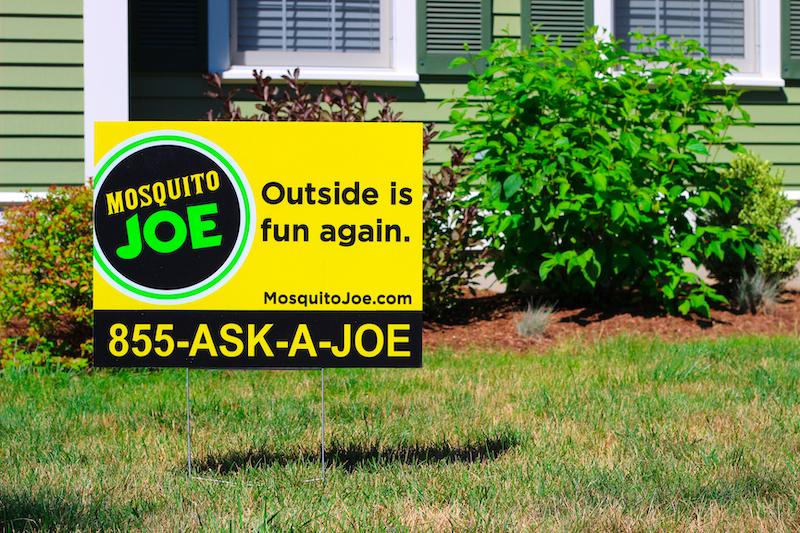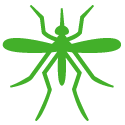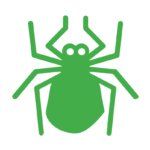The More You Read, The Less They Breed!
 At Mosquito Joe, we pride ourselves on offering industry-leading barrier treatments to rid your yard of mosquitoes, fleas, and ticks. However, we strive to empower our customers with the tools and knowledge needed to keep those pesky party-crashers away from their yard. To do so, we offer educational resources so you can get even more enjoyment out of your outdoor spaces. Whether you are a social butterfly who hosts many summer BBQs or you’d like to provide an itch-free yard for your kids and pets — these basic outside housekeeping tips will help you get started!
At Mosquito Joe, we pride ourselves on offering industry-leading barrier treatments to rid your yard of mosquitoes, fleas, and ticks. However, we strive to empower our customers with the tools and knowledge needed to keep those pesky party-crashers away from their yard. To do so, we offer educational resources so you can get even more enjoyment out of your outdoor spaces. Whether you are a social butterfly who hosts many summer BBQs or you’d like to provide an itch-free yard for your kids and pets — these basic outside housekeeping tips will help you get started!
Understanding the life cycle of outdoor pests such as mosquitoes is the first step in combating them.
Below is information on the typical life cycle of mosquitoes, ticks, and fleas, as well as how to get to them before they get to you.
 The Life Cycle of a Mosquito The Life Cycle of a Mosquito
- Female mosquitoes lay hundreds of eggs every few days during their lifetime, directly on or near water. Water is required in order for the eggs to hatch which typically happens within 48 hours.
- Upon hatching the larvae will emerge. Larvae are referred to as “rollers” because of how they appear while swimming, this is also known as the baby stage. Larvae live in the water and come to the surface to breathe; molting their skin four times and growing larger after each molt. After undergoing four stages of molting, the larvae become pupae.
- Resting before they make their grand entrance, the pupae is considered the teenage stage of the life cycle and the non-feeding era. Pupae still live in the water and continue to swim around. They are lighter than water so they live at the surface, and must occasionally take oxygen through breathing tubes called, “trumpets.” During this stage, the adult mosquito begins to develop, which can take up to four days dependent upon the temperature of the water.
- Adult mosquitoes will rest on the water with two concerns; mating and feeding. Once the body is completely dry and hardened, and the wings have fully opened, they are able to fly. Males locate females by the sound of their wings. Once they mate, males live three to five days and females live considerably longer, upwards of one to two months.
Learn how to combat mosquitoes here →
|
|
 The Life Cycle of a Tick The Life Cycle of a Tick
- There are four stages to a tick’s life cycle: egg, larvae, nymph, and adult, taking up to three years to fully develop. Throughout these years, most ticks feed on three different hosts.
- Upon hatching, they become larvae and the larvae feeds on the first host, which is typically a bird or a rodent, for several days before they detach and fall back on the ground.
- The larvae then transform into nymphs, which become active in the spring and begin to look for their second host – a rodent, pet or human and feed, repeating the process of detachment and molting.
- Once the tick enters the final stage of its life cycle, which occurs during the fall, both male and female ticks will look to feed on its third host, usually a rodent, deer, dog, cat, or human. Once the tick is well fed it detaches, falls to the ground and the males die. Female ticks, however, live through the winter and lay eggs in the spring before dying, completing the life cycle of a female tick.
Learn how to combat ticks here →
|
|
 The Life Cycle of a Flea The Life Cycle of a Flea
- Fleas undergo 4 stages in their life cycle: eggs, larval, pupal and adult.
- They lay between four to eight eggs which fall to the ground and hatch within one to twelve days.
- The larval stage lasts from four to eighteen days, and then the flea will enter the pupal stage.
- The pupal stage can last anywhere from three days to one year.
- Once the flea emerges from the pupal stage they become adults, and begin searching for food. Fleas will likely become adults more rapidly when in warmer temperatures and high humidity.
Learn how to combat fleas here →
|
|
 Common Mosquito and Tick Diseases Common Mosquito and Tick Diseases
Being bitten by mosquitoes is no fun, leaving you itchy and irritated for days. But mosquitoes and other biting insects can be more than a nuisance – they can be deadly. Disease cases from infected mosquitoes, ticks and fleas have tripled in the last 13 years, totaling more than 640,000 cases since 2004. Mosquito Joe wants everyone to enjoy the outdoors regardless of where they live or travel, so read up on these illnesses, where they are prevalent, and ways you can protect yourself, your family and pets against them.
Learn more about mosquito diseases here →
Learn more about tick diseases here →
|
 At Mosquito Joe, we pride ourselves on offering industry-leading barrier treatments to rid your yard of mosquitoes, fleas, and ticks. However, we strive to empower our customers with the tools and knowledge needed to keep those pesky party-crashers away from their yard. To do so, we offer educational resources so you can get even more enjoyment out of your outdoor spaces. Whether you are a social butterfly who hosts many summer BBQs or you’d like to provide an itch-free yard for your kids and pets — these basic outside housekeeping tips will help you get started!
At Mosquito Joe, we pride ourselves on offering industry-leading barrier treatments to rid your yard of mosquitoes, fleas, and ticks. However, we strive to empower our customers with the tools and knowledge needed to keep those pesky party-crashers away from their yard. To do so, we offer educational resources so you can get even more enjoyment out of your outdoor spaces. Whether you are a social butterfly who hosts many summer BBQs or you’d like to provide an itch-free yard for your kids and pets — these basic outside housekeeping tips will help you get started!

 The Life Cycle of a Tick
The Life Cycle of a Tick The Life Cycle of a Flea
The Life Cycle of a Flea